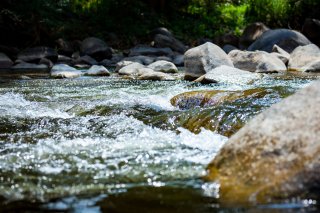Enhanced Aquifer Recharge Performance and Potential Risk in Different Regional and Hydrogeologic Settings Grants

Overuse of groundwater can lead to many issues that may impact water quality and water quantity. Enhanced aquifer recharge (EAR) is the practice of using various sources of water to replenish and supplement existing groundwater supplies and restore streamflow. While EAR implementation and management has been an active topic of research for many years, significant knowledge gaps remain concerning best practices in the design, siting, performance (hydrologic and water quality), longevity, maintenance, and monitoring of EAR in different land use and hydrogeologic settings.
EPA awarded $7,837,196 in grant funding to four institutions for research to improve our scientific understanding of uses and risks of enhanced aquifer recharge. With these Science to Achieve Results (STAR) research grants, investigators will assist communities throughout the United States in evaluating whether and how to invest in safe and sustainable EAR strategies for enhancing water supplies, protecting water quality, maintaining aquatic ecosystems, reducing land subsidence, avoiding sea water intrusion, and other end goals.
The following institutions are receiving an award:
Carnegie Mellon University, Pittsburgh, Pennsylvania
Project Title: Protecting Water Quality during Enhanced Aquifer Recharge: A Geochemical Compatibility Assessment of Various Water Sources and Co-located Aquifers in the United States
Principal Investigator: Sarah Fakhreddine
Award Amount: $1,845,583
Project Summary: This research project seeks to increase adoption of enhanced aquifer recharge (EAR) practices by better understanding the potential mobilization of geogenic (originating in the soil) and anthropogenic contaminants in key aquifer systems across the U.S. The project will focus on metal(loid)s, nutrients, salts, and pesticides, which pose a particular threat to water quality. The research will leverage a large body of publicly available data, including EPA, USGS, and state databases, to assess geochemical compatibility during EAR. To support the national analysis, the applicant will develop detailed case studies of existing EAR sites in different regional and operational settings. This work will provide a quantitative understanding of the risks of geogenic and anthropogenic contaminant mobilization based on geographically varying constraints related to available water sources, aquifer characteristics, and EAR end uses.
View the research abstract from Carnegie Mellon University.
Virginia Polytechnic Institute and State University, Blacksburg, Virginia
Project Title: Risk and Performance Evaluation of Enhanced Aquifer Recharge in the Coastal Plain
Principal Investigator: Mark A. Widdowson
Award Amount: $2,000,000
Project Summary: The overall objective of this project is to develop a web-based decision support tool to guide communities, agencies, and practitioners in the implementation of EAR in deep, confined aquifers. The research plan is designed to reveal relationships between the outcomes of several risk factors and to promote synergies in the research findings. The expected results of the proposed project will support effective EAR design and safe and sustainable implementation in the U.S. Coastal Plain and in regions with similar hydrogeology.
View the research abstract from Virginia Polytechnic Institute and State University.
Oklahoma State University, Stillwater, Oklahoma
Project Title: Development of Innovative Monitoring and Analysis Strategies for Rural
Enhanced Aquifer Recharge Structures
Award Amount: $1,991,613
Principal Investigator: Todd Halihan
Project Summary: This project aims to evaluate several methods of modification of rural basins to enhance recharge while monitoring the efficacy of each approach. In partnership with the local stakeholders and the site owner (City of Ada, OK), this project will employ microbiological, geochemical, sedimentological, groundwater gas monitoring, geophysical, and groundwater modeling tools to test the effectiveness and impacts of rural EAR structures. The research will determine if these structures can be deployed as part of rural land management strategies to safely increase groundwater supplies in fractured and karstic aquifers. The final product will be a rural EAR technical guidance approach for safely developing rural EAR structures in fractured and karstic aquifers.
View the research abstract from Oklahoma State University.
County of Los Angeles Department of Public Works, Alhambra, Calif.
Project Title: Validating Methods to Measure, Optimize and Model the behavior of Infiltration based BMPs in Groundwater Recharge and Potential Impact on Groundwater Quality
Award Amount: $2,000,000
Principal Investigator: Yao Kouwonou
Project Summary: This project seeks to develop a transferable investigative approach using geophysical methods, borings, and hydrological sensors to accurately characterize fastpath flow zones, monitor subsurface fluid movement and best management practices (BPM) exfiltration performance, and quantify soil hydrological properties. Migration of stormwater pollutants from the BMP via the identified soil fastpaths will be monitored to better understand the role of vadose zone characteristics on pollutant transport. Additionally, empirical data from the field monitoring will be incorporated to advance the OpenHydroQual infiltration model to determine deep percolation rates and predict pollutant transport, with the larger goal of using the calibrated model to explore the long-term, regional potential for groundwater recharge through urban BMPs. The project will result in a free and open-source user-friendly tool for evaluation of performance of EAR BMPs.
View the research abstract from the County of Los Angeles Department of Public Works.
